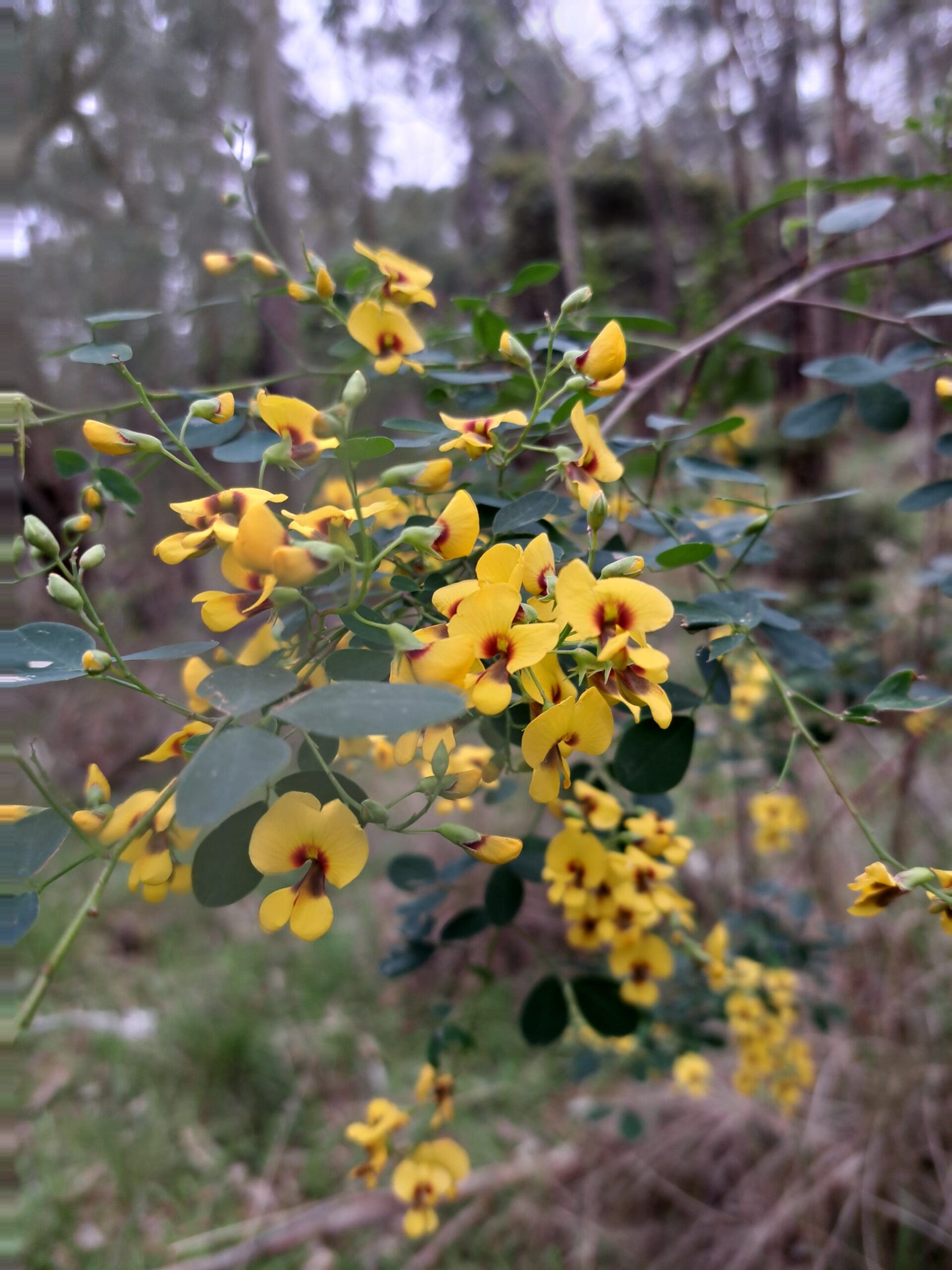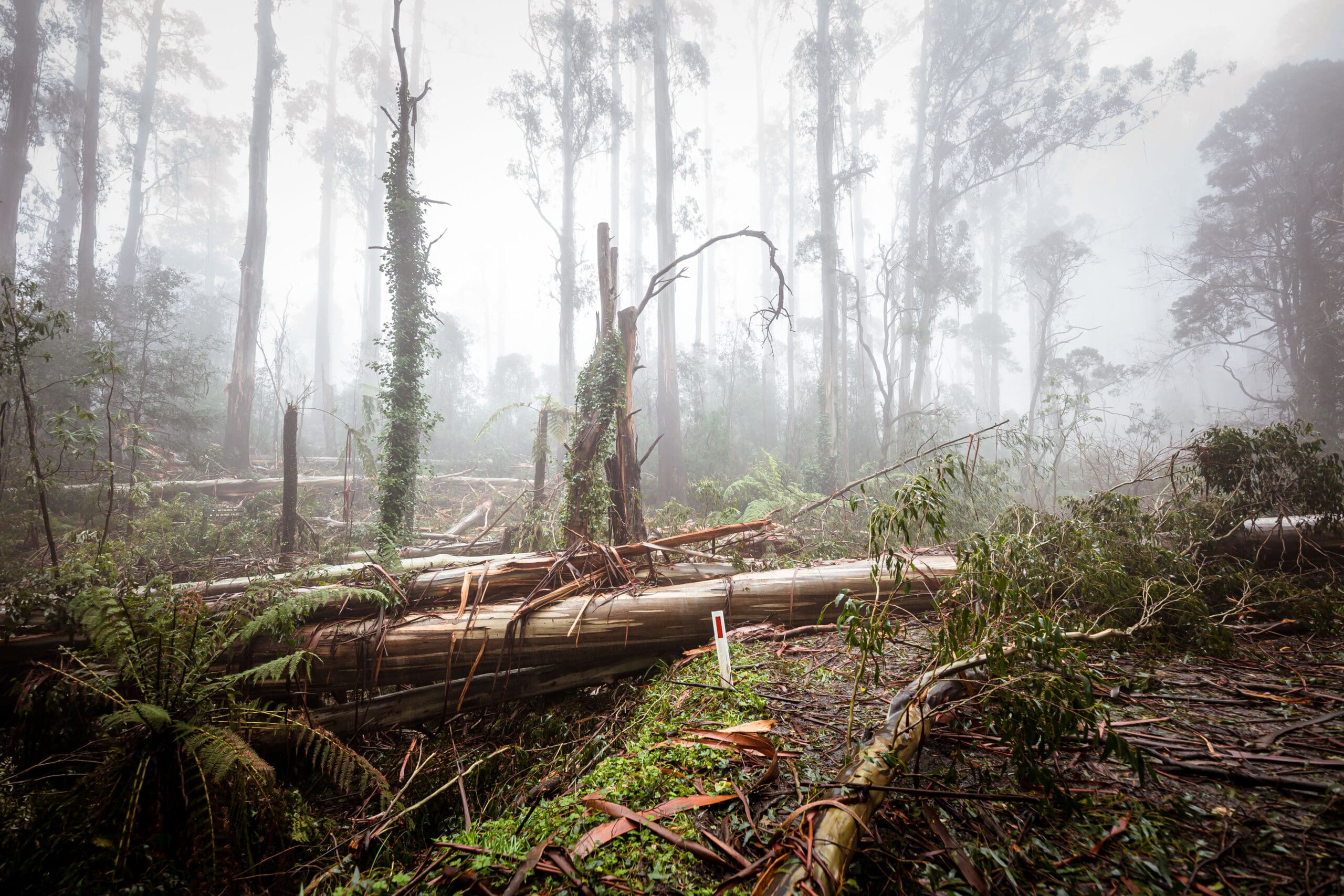Microclimate
Interpretive signage along the Resilience theme


Microclimate
“When we are on Country, we must always conduct ourselves with respect. Country is a living breathing eco system. Imagine it as if you are stepping foot onto a whole body – waterways instead of veins, billabongs as kidneys, trees our lungs, and grass the hairs on our arms – this network all connected by water, soil and fungus passing messages and nutrients and speaking a language that is not spoken verbally, but it is felt through the amazing receptor that is the human body.”
– Darren Wandin, Wurundjeri man
goranwarrabil (the Dandenong Ranges) covers a vast and diverse landscape that is both enchanting and precarious. Despite its beauty, this area has also been a place of wiinj (fire), baanj baanj (flood), damaging storms and high winds. These extreme climactic conditions pose significant challenges to the communities living and working here. Cool winters and an average annual rainfall that’s double Greater Melbourne’s, cause flooding and landslides yet those same cool temperatures and high rainfall enable an abundant growth of lush vegetation, which is one of the region’s most distinctive features. In summer, scorching temperatures, mountainous terrain and thick eucalypt-rich vegetation make goranwarrabil one of the most fire-prone areas in the world. Collectively, these hazards have destroyed homes and caused loss of life.
To survive, those who call ‘the hills’ home are resourceful, resilient and maintain a fierce community focus, all character traits that suit diverse microclimates and extremes. It’s as alluring as it is foreboding, yet the region’s haunting beauty continues to captivate.
woiwurrung translations by Wurundjeri woman Brooke Wandin.
